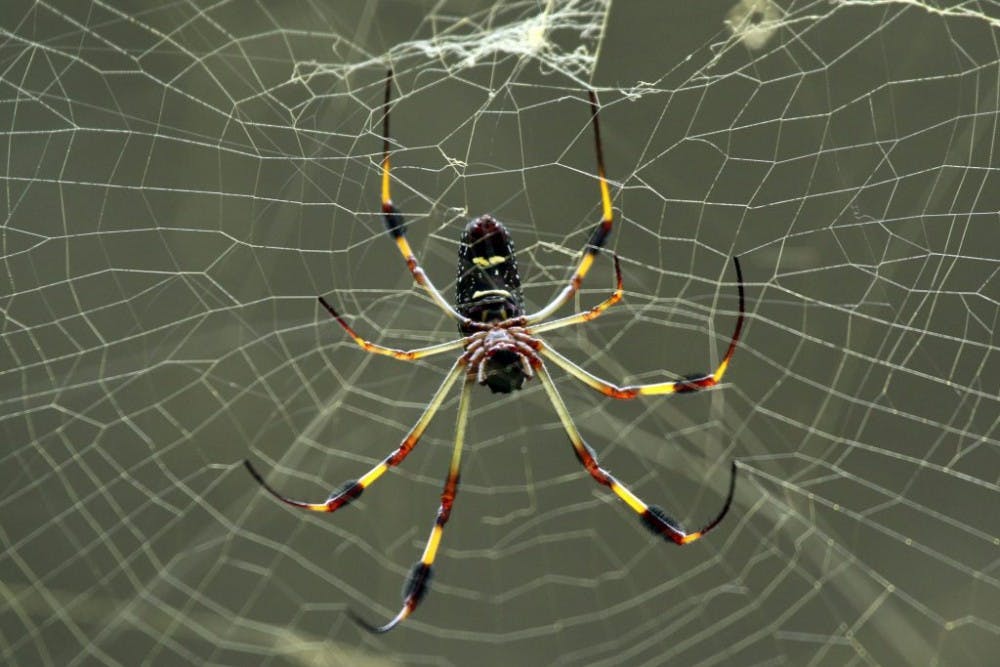A team of researchers at the University of Oxford recently discovered the Loxosceles genus, commonly known as the recluse spider. The species has unusually tough silk produced by a unique spinning mechanism. In the journal Materials Horizons, the research team, also consisting of members from the Applied Math Department from the College of William & Mary in Virginia, published their observations of the recluse spider and its silk’s properties.
The team used a high speed video recording device to capture the natural spinning behavior of the spider. They found that the spider spun at rates of 10-15 loops per second, creating 50 nanometer wide silk.
The structure of the ribbon silk spun was that of a looped metastructure that enhances toughness. When the researchers watched the video recordings, they discovered the recluse spider uses a complex spinning process that forms serial loops with self-adhesive junctions.
The spiders were kept in individual cylindrical housings and randomly selected for silk sampling. The silk strands from eight spiders were tested. Three looped and three non-looped strands were used.
Tensile testing led the researchers to conclude that the recluse spider’s silk overcame limitations of previously reported looped fibers. They created a mathematical model of a looped ribbon structure to describe the strength of the loops.
Increasing the number of loops enhanced the silk’s strength. For the recluse spider’s silk, the specific toughness was predicted to be able to increase up to 1000 percent if the looping of the silk did not weaken the fiber strength.
However the team realized through optical microscopy that not all loops opened and thus the effective specific toughness of looped strands decreased. The team found that there can be an average of 21 percent improvement in the silk if the weight of the unopened loops was neglected. The team attributed unopened loops to the imperfections in their sample preparation or testing parameters.
“The theory of knots adding strength is well proven. But adding loops to synthetic filaments always seemed to lead to premature fiber failure,” Hannes Schniepp, professor at the College of William & Mary, said in a press release.
Previous research of synthetic looped fibers displayed a decrease in strength resulting from cusps and defects formed through the unraveling of the fibers.
Following the silk’s tensile testing, the scientists fabricated their own looped strands modeled after the flexible recluse spider silk. They chose to use strapping tape as their material because of its elasticity, ribbon morphology and high resistance to torsion tearing. The team observed no significant decrease in strength. The addition of a loop significantly increased the toughness by 30 percent, eight percent greater than their elasticity model predicted.
The sacrificial bonds and hidden length mechanism is the key natural attribute contributing to the silk’s toughness. Also found in bones, sacrificial bonds are able to break and reform, effectively dissipating energy.
The recluse spider’s ribbon-like silk is especially functional due to its ribbon morphology, which retains the silk’s strength by avoiding any cusps or other stress concentration during extension. It also manages sacrificial bonding at the ribbon contact areas ensuring energy dissipation.
The paper concluded that the recluse spider’s unique spinning process and looped ribbon may help to inspire the design of synthetic materials with adjustable tensile attributes.
“Computer simulations demonstrate that fibers with many loops would be much, much tougher than those without loops,” Fritz Vollrath, an academic research leader at Oxford, said in a press release. “This right away suggests possible applications. For example, carbon filaments could be looped to make them less brittle and thus allow their use in novel impact absorbing structures.”





